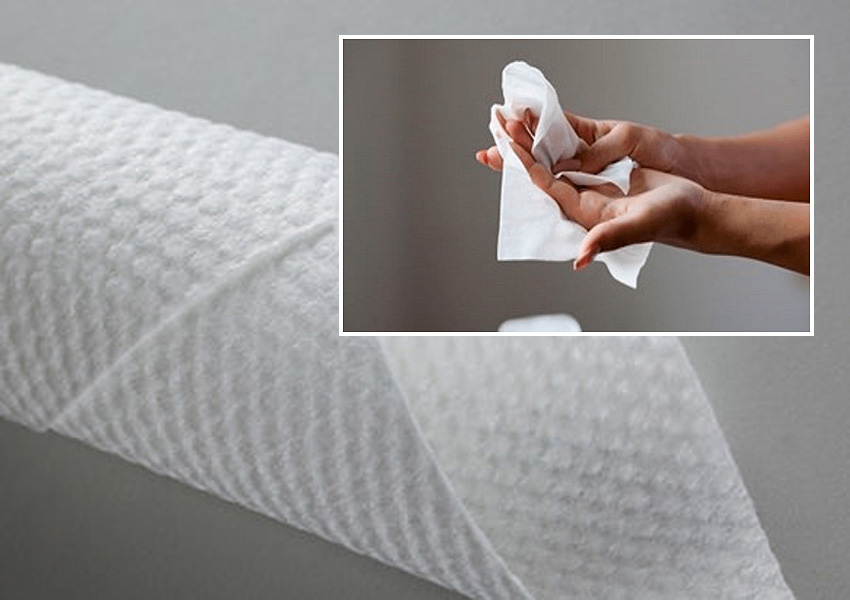Publications
Last
Advertisement
Partners


Laminated nonwovens - what are they: in simple words

There are several technologies for production of laminated nonwovens in the world. For foreign machine builders and converters, lamination technology involves the process of bonding several layers of nonwoven materials into a multilayer web. In the post-Soviet space, lamination is most often understood as the process of applying a molten polymer (glue) through a flat-slot die, or with the help of nozzles, to the base material (substrate) to give the final product special functional properties. A similar technology from foreign manufacturers has a different name - "coating", which literally means "applying some substance on a substrate surface". In our country, traditional laminated materials are more often referred to as “duplicated”, although this term does not mean at all that only two layers of the primary web are used in their production.
This article discusses the technology for obtaining multilayer nonwoven materials by bonding layers of individual nonwoven materials in different ways.
Thermal bonding (hot calendering) - with this method of lamination the webs of nonwoven materials coming from unwinders are bonded at a calender by means of high temperature and pressure.
This method of laminating nonwovens is the oldest one. The main disadvantages of this method are high energy consumption (the need for a separate thermo-oil heating station for the calender and large heat losses during production), bulky equipment, difficulty in achieving accuracy and uniformity of temperature across the entire width of the calender, inability to quickly adjust the temperature when setting up the process for certain non-woven materials, as well as inability to use films as top layers of the laminate.
Hot-melt bonding - with this method of lamination non-woven webs coming from unwinders are bonded at a hot-melt bonding unit using molten hot-melt adhesive applied through a flat die or nozzles.
This method remains very popular in the production of laminated materials used in the manufacture of individual elements of disposable hygiene products (diapers, pads, diaper sheets, etc.), for which functionality, fineness and softness are the most important indicators. It allows bonding "spunmelt" materials and "breathable" films of low weight (from 8 gsm) with hot melt adhesive (hot melt adhesive application: from 1 gsm) and obtain very thin two-, three- layer laminates with excellent functional and tactile properties. The possibility of zoned application of hot-melt adhesive on the bonded webs further expands possibilities of this technology.
The main feature of this technology is the need to apply non-toxic hot melt adhesives approved for use in materials used for the manufacture of hygiene products.
Ultrasonic bonding - with this method of lamination, nonwoven fabrics coming from unwinders are bonded at the ultrasonic bonding unit, passing between the engraving (anvil) roller and the waveguide (sonotrode), which transmits high-frequency vibration to the surface of the bonded materials. The thermal energy generated at the same time softens the polymer non-wovens at the point of their contact with the sonotrode and, with the help of a certain degree of pressure of the engraving roller, welds them.
This technology is a bit similar to hot calendering technology (the same forces of high temperature and pressure come into effect, and there is always a calender pattern on the surface of the finished laminate). However, there is no need to preheat the ultrasonic unit as while calendering, there is no heat loss, and you can immediately start producing the final product simply by arriving at work in the morning and pressing a button.
Production of ultrasonically bonded laminates most often applies to a construction segment. Basically, these are wind, hydro, and vapor barrier membrane materials that have a "breathing film" in their structure. In the hygienic segment, ultrasonic bonding takes place only when the structural elements of the final product are fastened together. The laminates themselves, produced using this technology, have a certain degree of rigidity and lose to hot-melt adhesive laminates in this regard.
From all of the above, it is obvious that the presence of a lamination line at a manufacturer of nonwoven materials (spunbond, SM ... S, breathable film, etc.) significantly expands its range of products and allows it to provide its consumer with a whole portfolio of products that are so necessary for any converter.
The article provides basic information on technologies and areas of application of the main types of laminates. However, as you know, our world is not black and white, and gradually laminated nonwoven materials migrate from one application area to another. Ultrasonic bonded laminates are beginning to be used in the medical and hygiene segments in the production of so-called “anti-plague” overalls and gowns, and hot-melt bonded laminates penetrate construction segments. Very often the reason for this phenomenon is a unique production and economic situation of an individual manufacturer, cost calculation, availability of certain facilities, and feasibility of producing a laminate in one way or another, as well as individual requirements of the consumer.
The presence of such equipment (and even better, a combination of the latter two technologies discussed) at the production site of any nonwovens manufacturer in the era of COVID cannot but have a positive impact on its business activity. Because only lack of imagination may prevent you from trying to bond different combinations of the existing web-like materials in search of the final product functionality, not necessarily focusing only on nonwovens. Quite recently, even a laminate consisting of two or three layers of spunbond nonwovens bonded by means of ultrasonic technology found its consumers, and companies that produced such laminates managed even to patent them.
In the light of the latest news, one of the largest players in the nonwovens market, AVGOL, have announced technical re-equipment of its production site in Russia, which consists in allocating investments to expand production through the acquisition of three production lines, namely: Reicofil 5 (SSMMXS), a meltblown production line and, which just concerns our topic, a lamination line for non-woven materials.













